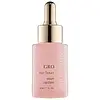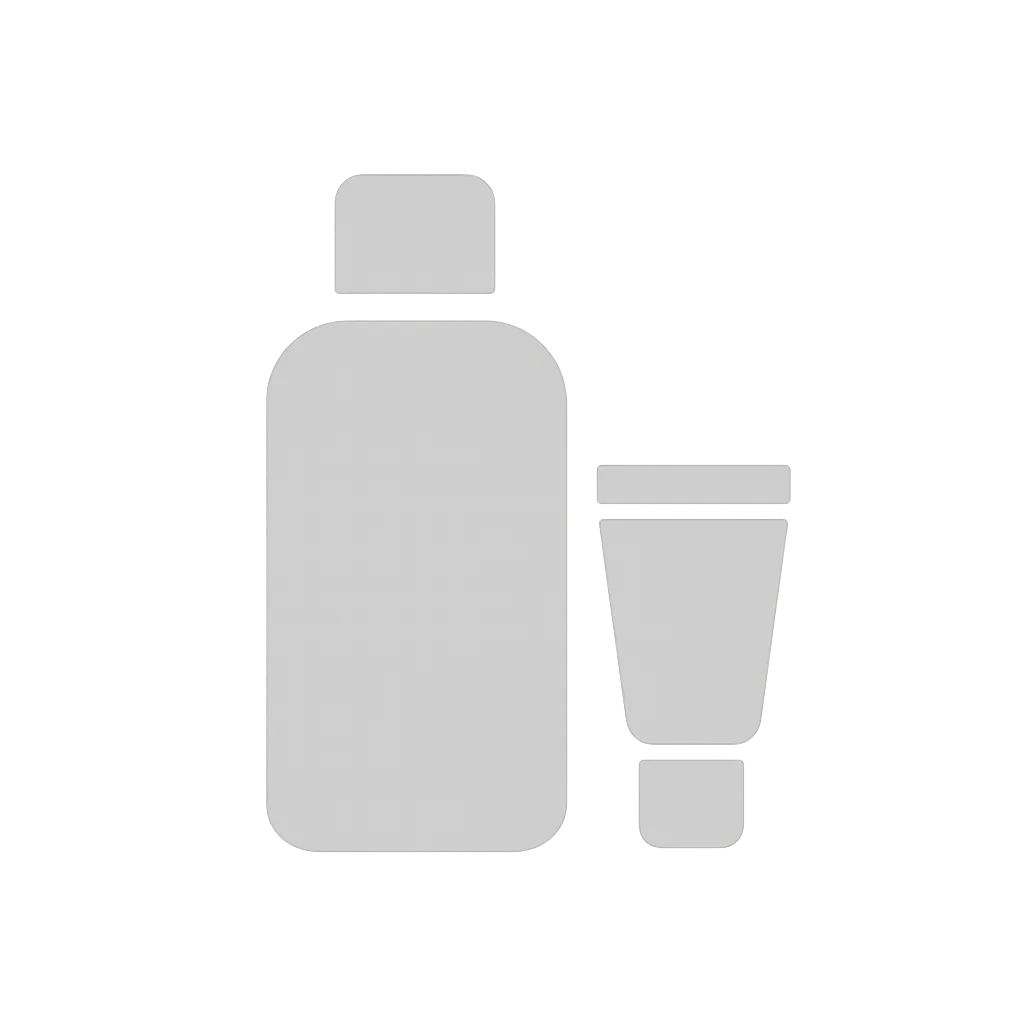What's inside
What's inside
 Key Ingredients
Key Ingredients

 Benefits
Benefits

 Concerns
Concerns

 Ingredients Side-by-side
Ingredients Side-by-side

Water
Skin ConditioningGlycerin
HumectantButylene Glycol
HumectantPolysorbate 20
EmulsifyingPEG-40 Hydrogenated Castor Oil
EmulsifyingMenthyl Lactate
MaskingAlanine
MaskingAlcohol
AntimicrobialApigenin
AntioxidantArctostaphylos Uva Ursi Leaf Extract
Skin ConditioningArginine
MaskingAspartic Acid
MaskingBiotinoyl Tripeptide-1
Bisabolol
MaskingCalendula Officinalis Flower Extract
MaskingCamellia Oleifera Leaf Extract
AstringentCarica Papaya Fruit Extract
Skin ConditioningDisodium EDTA
Geranium Maculatum Extract
TonicGinkgo Biloba Leaf Extract
Skin ConditioningGlycine
BufferingGlycyrrhiza Glabra Root Extract
BleachingHistidine
HumectantHydrolyzed Wheat Protein
Skin ConditioningIsoleucine
Skin ConditioningIsopropyl Cloprostenate
Magnesium Ascorbyl Phosphate
AntioxidantOleanolic Acid
Skin ConditioningPanax Ginseng Root Extract
EmollientPanthenol
Skin ConditioningParfum
MaskingPCA
HumectantPhenylalanine
MaskingPilocarpus Pennatifolius Leaf Extract
TonicPPG-26-Buteth-26
Skin ConditioningProline
Skin ConditioningSerine
MaskingSodium Lactate
BufferingSodium PCA
HumectantTaraxacum Officinale Leaf Extract
Skin ConditioningThreonine
Valine
MaskingVitis Vinifera Seed Extract
AntimicrobialBenzoic Acid
MaskingChlorphenesin
AntimicrobialPhenoxyethanol
PreservativeSodium Benzoate
MaskingSodium Metabisulfite
AntioxidantSorbic Acid
PreservativeAlpha-Isomethyl Ionone
PerfumingBenzyl Benzoate
AntimicrobialCitronellol
PerfumingHexyl Cinnamal
PerfumingWater, Glycerin, Butylene Glycol, Polysorbate 20, PEG-40 Hydrogenated Castor Oil, Menthyl Lactate, Alanine, Alcohol, Apigenin, Arctostaphylos Uva Ursi Leaf Extract, Arginine, Aspartic Acid, Biotinoyl Tripeptide-1, Bisabolol, Calendula Officinalis Flower Extract, Camellia Oleifera Leaf Extract, Carica Papaya Fruit Extract, Disodium EDTA, Geranium Maculatum Extract, Ginkgo Biloba Leaf Extract, Glycine, Glycyrrhiza Glabra Root Extract, Histidine, Hydrolyzed Wheat Protein, Isoleucine, Isopropyl Cloprostenate, Magnesium Ascorbyl Phosphate, Oleanolic Acid, Panax Ginseng Root Extract, Panthenol, Parfum, PCA, Phenylalanine, Pilocarpus Pennatifolius Leaf Extract, PPG-26-Buteth-26, Proline, Serine, Sodium Lactate, Sodium PCA, Taraxacum Officinale Leaf Extract, Threonine, Valine, Vitis Vinifera Seed Extract, Benzoic Acid, Chlorphenesin, Phenoxyethanol, Sodium Benzoate, Sodium Metabisulfite, Sorbic Acid, Alpha-Isomethyl Ionone, Benzyl Benzoate, Citronellol, Hexyl Cinnamal
Water
Skin ConditioningButylene Glycol
HumectantGlycerin
HumectantAlcohol Denat.
AntimicrobialPolyglyceryl-10 Laurate
Skin ConditioningCaffeine
Skin ConditioningCurcuma Longa Callus Conditioned Media
Skin ConditioningCitrus Bergamia Peel Oil Expressed
PerfumingSodium Phytate
Pentylene Glycol
Skin ConditioningLimonene
PerfumingCitric Acid
BufferingSodium Benzoate
MaskingPotassium Sorbate
PreservativeLactic Acid
BufferingTrifolium Pratense/Vigna Radiata) Sprout Extract
AntioxidantLinalool
PerfumingSodium Hydroxide
BufferingBiotin
AntiseborrhoeicAlcohol
AntimicrobialPhytic Acid
Linalyl Acetate
MaskingPinene
MaskingNicotiana Benthamiana Octapeptide-30 Sh-Oligopeptide-2
Skin ConditioningNicotiana Benthamiana Hexapeptide-40 Sh-Polypeptide-9
Nicotiana Benthamiana Hexapeptide-40 Sh-Polypeptide-86
Water, Butylene Glycol, Glycerin, Alcohol Denat., Polyglyceryl-10 Laurate, Caffeine, Curcuma Longa Callus Conditioned Media, Citrus Bergamia Peel Oil Expressed, Sodium Phytate, Pentylene Glycol, Limonene, Citric Acid, Sodium Benzoate, Potassium Sorbate, Lactic Acid, Trifolium Pratense/Vigna Radiata) Sprout Extract, Linalool, Sodium Hydroxide, Biotin, Alcohol, Phytic Acid, Linalyl Acetate, Pinene, Nicotiana Benthamiana Octapeptide-30 Sh-Oligopeptide-2, Nicotiana Benthamiana Hexapeptide-40 Sh-Polypeptide-9, Nicotiana Benthamiana Hexapeptide-40 Sh-Polypeptide-86
Ingredients Explained
These ingredients are found in both products.
Ingredients higher up in an ingredient list are typically present in a larger amount.
Alcohol comes in many different forms. Different types of alcohol will have different effects on skin. This ingredient is usually an astringent alcohol.
These alcohols are drying on the skin. They may strip away your skin's natural oils and even damage your skin barrier. Astringent alcohols may also irritate skin.
Other types of astringent alcohols include:
According to the National Rosacea Society based in the US, you should be mindful of products with these alcohols in the top half of ingredients.
Any type of sanitizing product will have high amounts of alcohol to help kill bacteria and viruses.
Fatty alcohols come from plant oils such as coconut oil. These can help hydrate the skin and are non-irritating. Some fatty alcohols include cetyl and stearyl alcohol.
Learn more about AlcoholButylene Glycol (or BG) is used within cosmetic products for a few different reasons:
Overall, Butylene Glycol is a safe and well-rounded ingredient that works well with other ingredients.
Though this ingredient works well with most skin types, some people with sensitive skin may experience a reaction such as allergic rashes, closed comedones, or itchiness.
Learn more about Butylene GlycolGlycerin is already naturally found in your skin. It helps moisturize and protect your skin.
A study from 2016 found glycerin to be more effective as a humectant than AHAs and hyaluronic acid.
As a humectant, it helps the skin stay hydrated by pulling moisture to your skin. The low molecular weight of glycerin allows it to pull moisture into the deeper layers of your skin.
Hydrated skin improves your skin barrier; Your skin barrier helps protect against irritants and bacteria.
Glycerin has also been found to have antimicrobial and antiviral properties. Due to these properties, glycerin is often used in wound and burn treatments.
In cosmetics, glycerin is usually derived from plants such as soybean or palm. However, it can also be sourced from animals, such as tallow or animal fat.
This ingredient is organic, colorless, odorless, and non-toxic.
Glycerin is the name for this ingredient in American English. British English uses Glycerol/Glycerine.
Learn more about GlycerinSodium Benzoate is a preservative. It's used in both cosmetic and food products to inhibit the growth of mold and bacteria. It is typically produced synthetically.
Both the US FDA and EU Health Committee have approved the use of sodium benzoate. In the US, levels of 0.1% (of the total product) are allowed.
Sodium benzoate works as a preservative by inhibiting the growth of bacteria inside of cells. It prevents the cell from fermenting a type of sugar using an enzyme called phosphofructokinase.
It is the salt of benzoic acid. Foods containing sodium benzoate include soda, salad dressings, condiments, fruit juices, wines, and snack foods.
Studies for using ascorbic acid and sodium benzoate in cosmetics are lacking, especially in skincare routines with multiple steps.
We always recommend speaking with a professional, such as a dermatologist, if you have any concerns.
Learn more about Sodium BenzoateWater. It's the most common cosmetic ingredient of all. You'll usually see it at the top of ingredient lists, meaning that it makes up the largest part of the product.
So why is it so popular? Water most often acts as a solvent - this means that it helps dissolve other ingredients into the formulation.
You'll also recognize water as that liquid we all need to stay alive. If you see this, drink a glass of water. Stay hydrated!
Learn more about Water